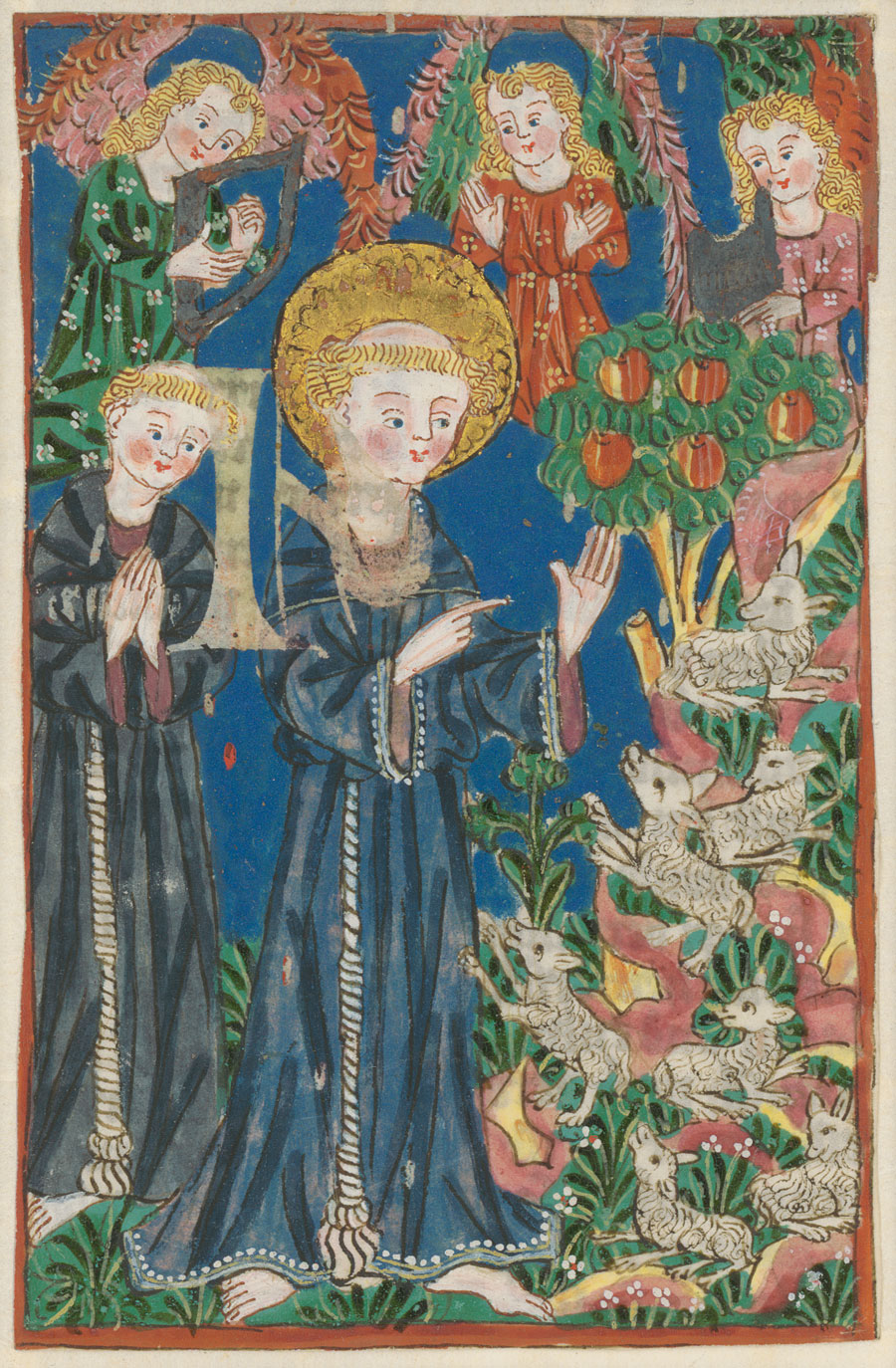Observant Sisters
The Medieval women who illustrated manuscripts are finally being recognized
The Medieval women who illustrated manuscripts are finally being recognized

While working on his study of Women Writers of the Middle Ages (1984), Peter Dronke remarked that colleagues often asked him if he thought there was something about women’s writing that distinguishes it from men’s. Dronke always replied that he was not searching for a ‘Platonic Form, Femininity-in-writing’. But, in his study, he did identify what he thought was a common quality in women’s writing. This was a certain ‘immediacy’, a particular self-reflexivity that was unique to these texts.
If you want to ask the same question about women’s painting, you immediately run into much greater difficulties, since very few works from the Middle Ages can reliably be attributed to female artists. The Dictionary of Women Artists (1997) lists 590 women, only five of whom lived before 1500. And, of these, only Saint Caterina Vigri of Bologna can be connected to more than a single work or manuscript.

It is not that women weren’t engaged in making art, especially manuscript illuminations. In fact, in the secular world of the 15th century, they are surprisingly well represented in painters’ guild records, which show that, in some places, such as the city of Bruges in 1480, up to 25 percent of guild members were women. Yet, their work has seldom been identified because most female professional artists were daughters of painters who trained them to illuminate manuscripts in the style of the family workshop.
This leaves open the field of convent women’s art, which is distinguishable because it does not conform to the professional mainstream but, rather, to regional and often unique — even idiosyncratic — scriptorium styles. Many works by such women artists are still to be found in convent archives.
Recently, for example, evidence has begun to accumulate that at least 180 full-page manuscript illustrations can be attributed to the hand of Sibylla von Bondorf (c.1440 to c.1525), a nun of the Clarissan convent at Freiburg im Breisgau in Germany. Besides illuminations in liturgical volumes and prayer books, the works of Von Bondorf include complete cycles of full-page illustrations of the lives of Saint Francis (52 miniatures), Saint Clara (33) and Saint Elisabeth (14). This considerable body of work is significant not only because it allows us to study the development of style and themes in the work of one medieval artist but also facilitates the identification of the house style of a scriptorium and the networks in which its manuscripts circulated. In the case of Von Bondorf, copies of her works and pasted-in miniatures by her can be found at several other cloisters connected by an efficient medieval inter-library loan system.

Particularly important is the role that convent works played in religious reform movements such as the Observant reform, which swept through religious orders in German-speaking areas in the 15th century. This political and religious context casts light on circumstances that encouraged women’s artistic production. We know, for example, that the colonization of women’s houses by Observant reform groups was often followed by a period of industrious manuscript production, library building and exchanging of texts for copying. This activity was fuelled by the need to quickly produce large numbers of revised liturgical books and vernacular devotional texts for newly reformed women’s houses — circumstances that produced a mandate and the environment for training female scribes and artists.
Fortunately, the extensive records kept by the reform movement also enable us to piece together additional information about Von Bondorf. Her name appears in an illustrated copy of the Clarissan Rule that was presented as a gift to the sisters of the Bicken Cloister in Villingen on the occasion of its reform in 1480, containing the inscription under the first miniature: ‘This picture is by sister Sibilla de Bondorf. Pray to God for her.’
By participating in Observant networks, convent women learned what was being produced at other houses and modelled their own iconography and solutions to problems. One can see, for example, that Von Bondorf, who was a non-professional artist — albeit one who displays a fine sense of line, colour and design — clearly had no experience in perspectival drawing. Yet, she deals creatively with the problem of perspective by employing a sort of tapestry or textile solution, which uses pattern to delineate and unify background and foreground in an original style that finds a more recent echo in the work of Gustav Klimt. Her images are characterized by bright, primary colours and depict scenes crowded by figures with winsome physiognomies, text scrolls and mosaic design patterns.

Often, convent women’s art is characterized by an immediate or personal form of self-expression, as seen in folio 30r of the gift manuscript for Cloister Villingen, in which Von Bondorf underscores the focus of spiritual reform by illustrating the parable of the Lost Sheep. Her image depicts a soul held in the arms of Christ, The Good Shepherd, who announces: ‘Rejoice with me, for I have found my sheep that was lost.’ (Luke 15:6) Not insignificantly, these works offer an inside view of pre-Reformation reform spirituality as women saw and expressed it. The images Von Bondorf and the artists of her circle left behind express an uncommon vivacity, originality and, above all, a confident spirituality.























